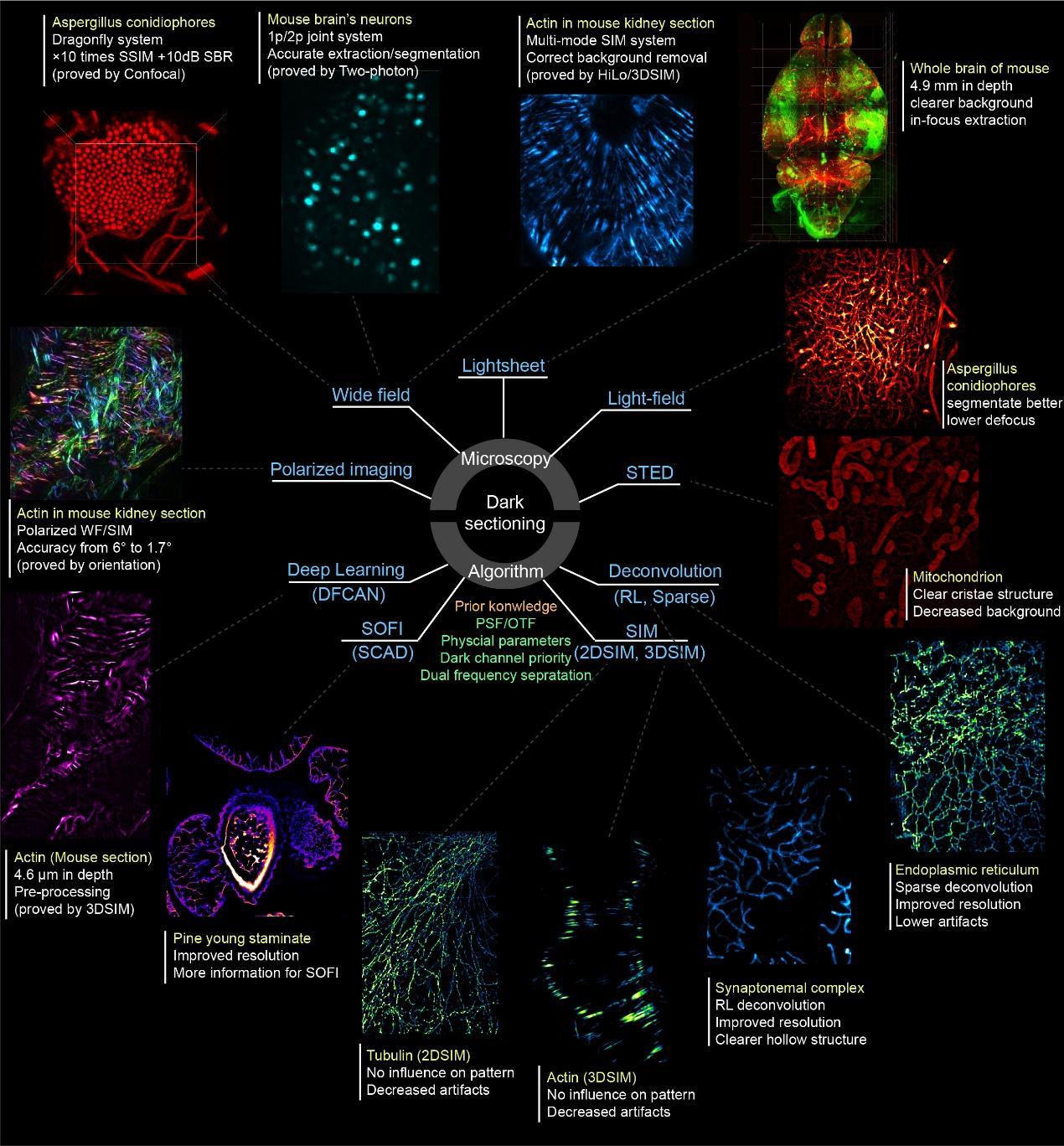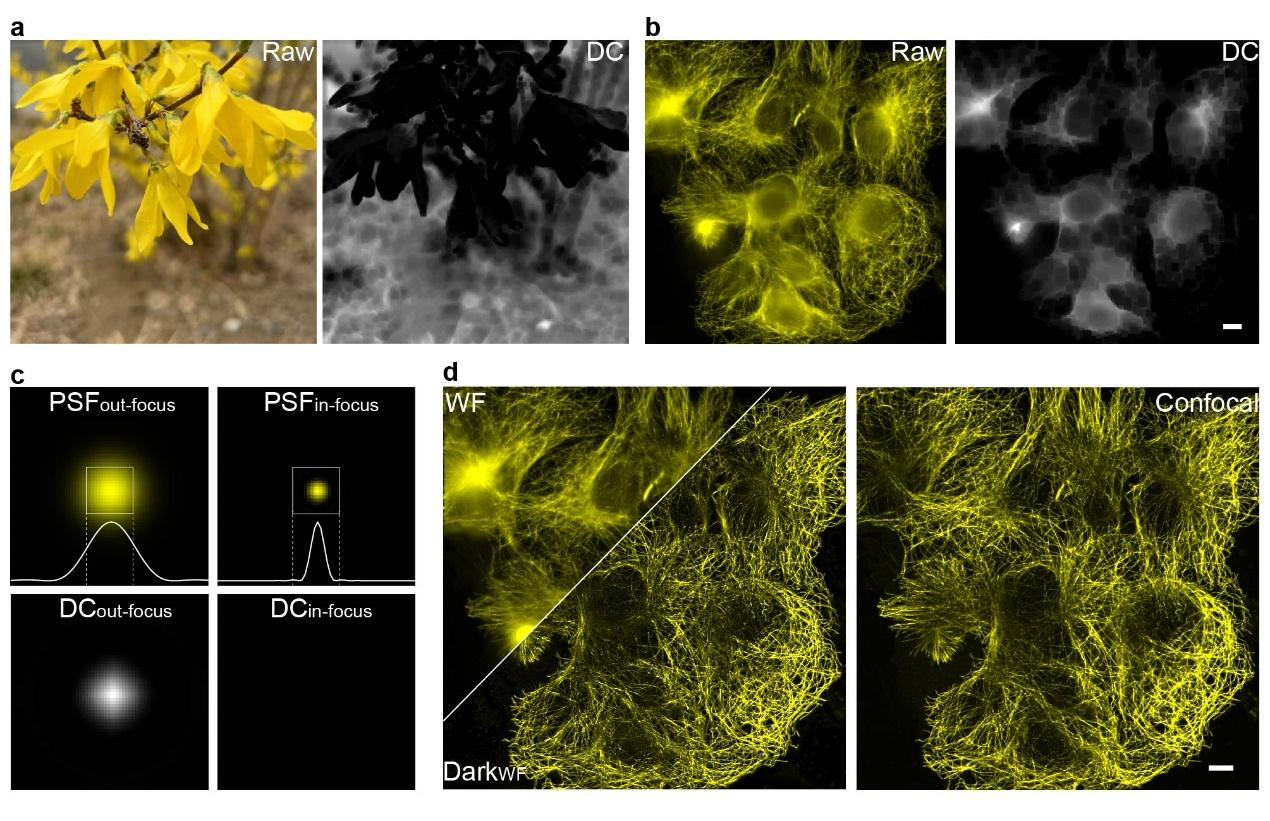Peking University, May 23, 2025: A collaboration between team led by Xi Peng, researcher from PKU College of Future Technology, and Qu Junle from Shenzhen University developed an innovative approach to enhance optical sectioning capabilities across diverse fluorescence imaging scenarios.
By integrating computer vision with fluorescence microscopy, they invented a dark channel-based optical sectioning algorithm (Dark sectioning). This research, titled "Dark sectioning boosts segmentation accuracy and image quality in fluorescence microscopy," was published in
Nature Methods.
Why it matters
The cornerstone of modern optical microscopy technology lies in eliminating scattering light and increasing optical sectioning capability within samples. However, optical sectioning techniques often come with increased system costs, compromised temporal resolution, and extra phototoxicity. And biological sectioning approaches introduce complexity to the process of sampling.
Figure 1. (a, b) Dark channel processing results for natural images and out-of-focus fluorescence images; (c) Differences in dark channel images caused by variations in point spread function (PSF) sizes; (d) Comparison of images before and after Dark sectioning. Scale bar: 4 μm.
Methodology
To solve the problems, the researchers developed a background removal method for fluorescence imaging called dark-channel optical sectioning (Dark sectioning). This method first separates high- and low-frequency components of the image to preserve weak signals, applying background removal only to the low-frequency part. It optimizes image patch sizes using physical point spread functions (PSFs) and simulates the initial background distribution using an extra low-pass filter to quantitatively estimate the background.

Figure 2. Dark sectioning compatibility with diverse fluorescence-based microscopy systems and reconstruction/post-processing algorithms. These include: Hardware modalities: widefield imaging, light-sheet/light-field imaging, stimulated emission depletion (STED) imaging, polarization-resolved imaging; Reconstruction/post-processing methods: deep learning-based super-resolution, super-resolution optical fluctuation imaging, 2D/3D structured illumination microscopy (SIM), and deconvolution algorithms.
Finding
Through cross-validation across widefield to confocal, widefield to optical-sectioning SIM, 2DSIM to 3DSIM, and one-photon to two-photon systems, the team demonstrated that Dark sectioning achieves imaging quality comparable to confocal/optical-sectioning SIM/3DSIM/two-photon microscopy using only widefield images. Moreover, it further enhances the optical sectioning capabilities of these state-of-art techniques in deep-tissue imaging.
Finally, the researchers systematically explored the application scenarios of Dark sectioning across diverse optical microscopy hardware modalities and reconstruction/post-processing algorithms, as illustrated in Fig. 2. They found that Dark sectioning is not only compatible with hardware modalities in enhancing optical sectioning and polarization analysis capabilities; but also synergizes effectively with reconstruction/post-processing algorithms like deep learning-based super-resolution, super-resolution optical fluctuation imaging (SOFI/SACD), 2D/3DSIM), and deconvolution.
Implication
Dark sectioning efficiently removes out-of-focus background only using a single-frame image, significantly improving signal-to-background ratio (SBR) and structural similarity (SSIM). The technique significantly reduces artifacts in 2D/3D SIM reconstructions while improving the resolution of SOFI and deconvolution. This advancement opens new possibilities for deep tissue research, pathological diagnosis, and dynamic observation of living organisms.
This article is featured in the "Why It Matters" series. More from this series.
Read more: https://www.nature.com/articles/s41592-025-02667-6
Edited by: Chen Shizhuo
Source: Peking University College of Future Technology


